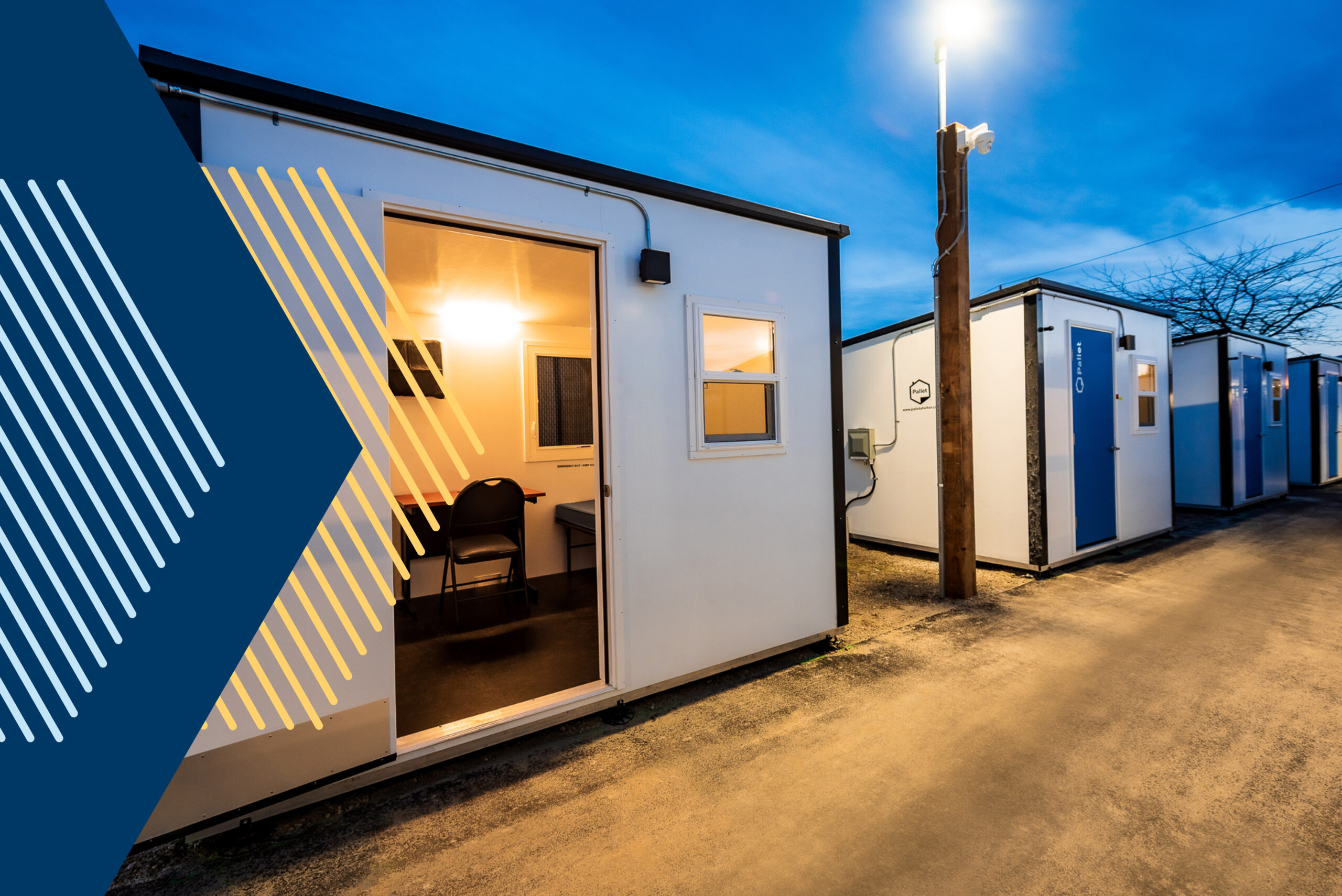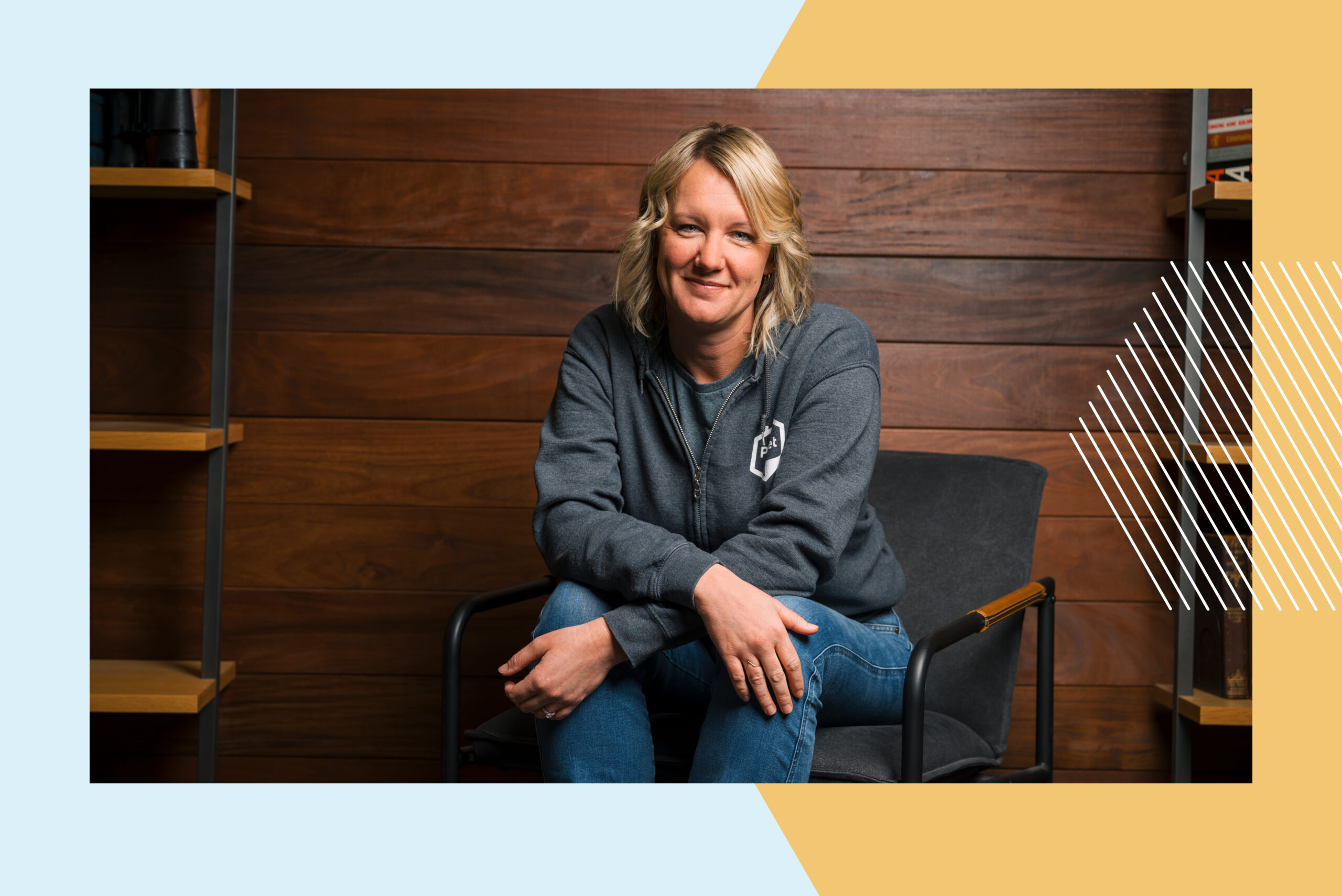Why People Experiencing Homelessness Don’t Accept Shelter
May 20, 2020
We sometimes hear from people who believe that “homeless people don’t want shelter,” or “you can build all the shelters you want, but homeless people won’t use them.” We know these statements aren’t true, because every shelter community that Pallet has built has been filled within days of opening, and continues to operate at maximum capacity — even when shelter residents move on to permanent housing, making space for new people facing homelessness to move in.
That said, even if there is a small percentage of people without homes who don't want shelter in any form, we don't believe that's a valid reason to not help those who are in a bad situation and want access to shelter.
We designed our shelters as a solution to some of the challenges associated with traditional, mass care shelters — because while mass shelters have traditionally been the standard for shelters for the homeless in America, they aren’t an ideal solution for everyone. Here are five understandable reasons that someone experiencing homelessness might avoid traditional, mass care shelters.
Understandable Reasons the Homeless Don’t Go to Shelters:
-
There’s a limited supply of beds
In cities with an inadequate number of shelter beds, people facing homelessness might decide not to wait in line for a bed out of fear that they might not get a bed at all. It’s not because they don’t want shelter, and certainly not because they’re lazy — it’s because there are risks to waiting in line for a shelter bed that outweigh the potential benefits of finding that bed.
For the homeless who want to try to obtain one of a limited number of beds, they must leave the location that they slept the night before and carry everything they own to the shelter waiting line. If the shelter fills and they’re still in line, those who haven’t been granted a bed need to search the streets for a new place to sleep that night.
Even for the homeless who are lucky enough to get a bed that night, a bed for a night doesn’t end their worries. If the shelter where they’re staying is an overnight-only shelter, the shelter’s residents must leave in the morning and play the “shelter bed lottery” again the next evening.
-
Shelter restrictions can be limiting
Many mass care shelters have limiting rules and restrictions that exclude some people experiencing homelessness. These rules and restrictions are well-intended, but can prevent people from accessing shelter beds.
For example, many mass shelters don’t allow pets — and for good reason, if you can imagine a mass shelter with dozens of dogs running around on the loose. But for the homeless with pets, who wouldn’t imagine giving up their only companion, where do they go for shelter? Similarly, some shelters don’t allow personal belongings, and others don’t allow families.
Finally, many shelters have curfews that prevent residents from entering or leaving after an established time. Curfews can help site managers control who enters and exits the shelters and supports resident safety, but for those who work night shifts, these curfews can make the homeless choose between a bed and a job.
-
They don’t want to abandon their only safety net
Every homeless encampment or gathering on the street is a community of its own with residents that look out for each other. For the homeless without family or a traditional support network, their fellow friends on the street act as their “family,” and in some cases are their only safety net they have in times of trouble. When the homeless move from these communities and into a shelter, they fear that they’ll lose the safety net that they’ve previously known and counted on in challenging situations.
-
They want to avoid conflict and abuse
Every person without shelter wants to avoid abuse of any kinds. The homeless who move into a traditional mass shelter don’t know who will be sleeping on the cots near them or if they’ll get along with those people. This concern is especially high for homeless women and children, and even higher for women who have been the victim of sexual abuse.
Conflict can arise any time there’s a gathering of any number of people, and the more people in an enclosed space, the higher the chances of conflict. For all these reasons, sleeping in a mass shelter can be perceived as more unnerving than sleeping alone in a hidden area of a park, an understandable reason for some people to avoid shelter.
-
Public health concerns
Like most people in America, the homeless are concerned about the spread of coronavirus. People experiencing homelessness are especially vulnerable to coronavirus, and mass shelters could be a place where the virus is quickly and easily transmitted from one person to another. In situations where shelter is not needed desperately, the homeless may forgo mass sheltering locations out of fear that they may contract COVID-19 or another virus.
While these reasons for avoiding traditional shelter are understandable, some will always argue that there’s a population of people experiencing homelessness in America who will never accept any form of shelter. Even if there is a small percentage of people experiencing homelessness who don’t want shelter in any form, the fact is that there's another percentage of people who desperately need shelter.
We’ve designed Pallet’s personal, dignified shelters to reduce the barriers to sheltering, and we're going to keep building shelters in compassion for those people in need — the families and individuals who are looking for a pathway into a life of stability.


